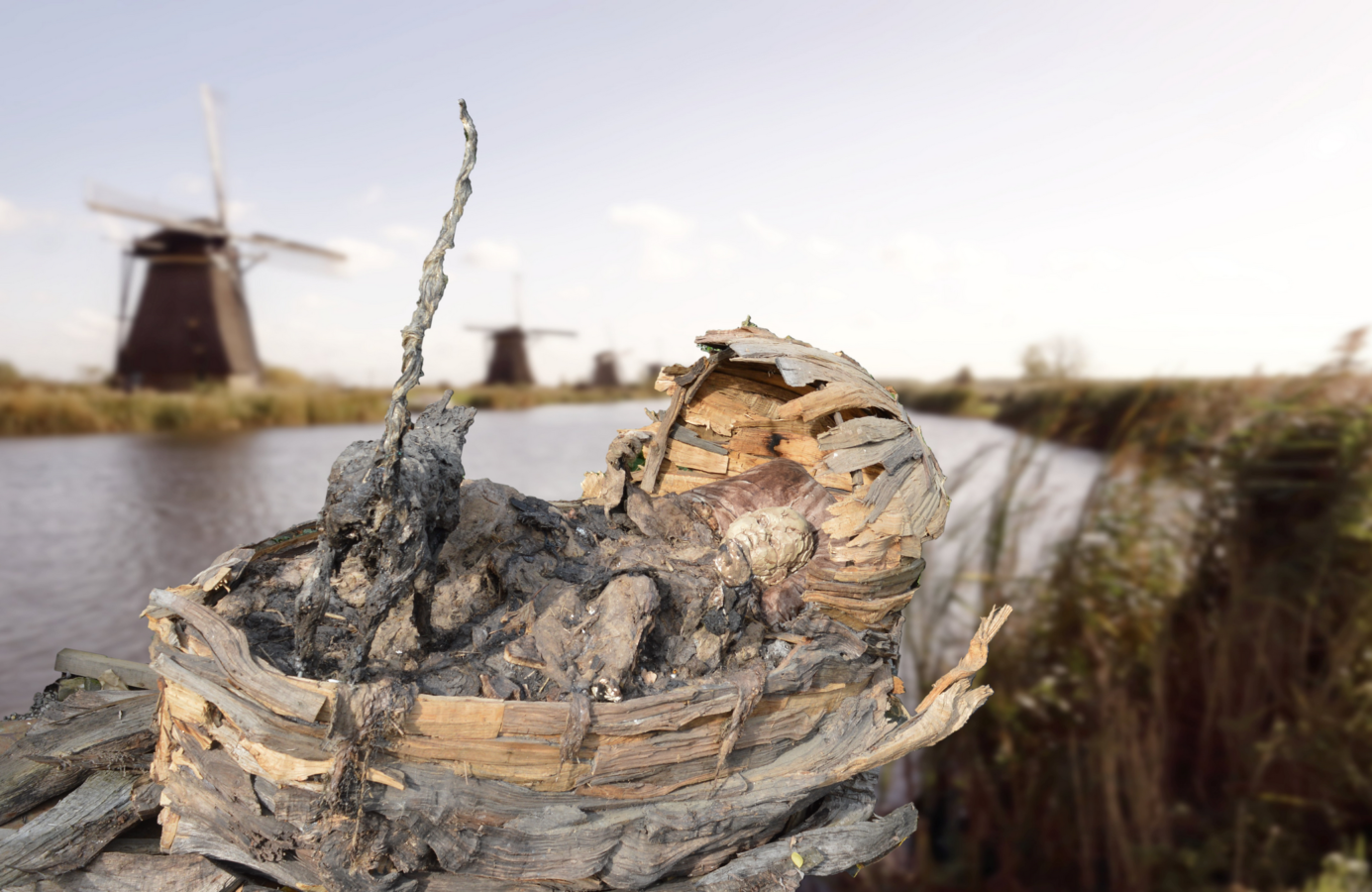
The festive unveiling of the cradle on Friday November 19th.
On the night of November 18, 1421: a ferocious storm breaks the dikes and causes one of the worst floods in Dutch history: the Saint-Elizabeth Flood. People died, villages drowned, the Biesbosch was formed. The St Elizabeth’s Flood was an iconic disaster 600 years ago that is still very much alive today. Because the water is coming again, as a result of global climate change.

The festive unveiling of the cradle on Friday November 19th.
Inextricably linked to the disaster and the village of Kinderdijk is the folk tale about the child in a crib that was said to have washed ashore at the dike in what is now known as Kinderdijk during the Saint-Elizabeth Flood. After the flood, when the survivors dared to go outside again, they saw a cradle floating along the dike, from which the cry of a child could be heard. The bobbing crib was balanced by a cat, which jumped back and forth to keep the basket from sinking and thus kept the baby alive. Along the East Kinderdijk are more signals that refer to the old saga, such as on Huis te Kinderdijk and the name “Kattenwiel”.

Beatrice's crib is temporarily located in Kinderdijk UNESCO World Heritage
In order to never forget the legend and the danger of the power of the water, the foundation of Beatrice’s crib created a statue. For now it will be part of Kinderdijk UNESCO World Heritage, but later the statue will enrich the banks of Alblasserdam. Getting the 400-pound bronze statue to float and rock, just like the cat did, required a lot of thought and expertise and has become an innovative example of ‘Alblasserdam craftsmanship’.